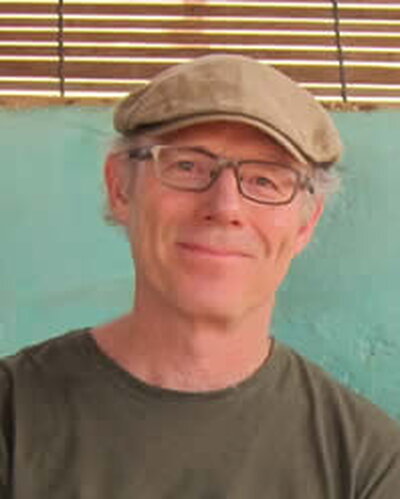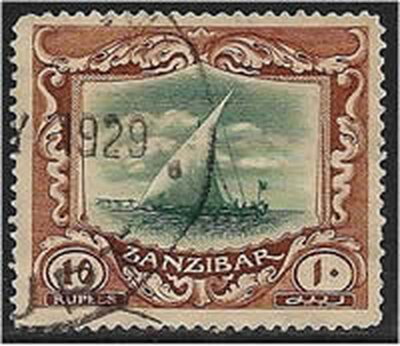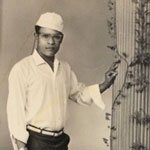
Habari talks to Thomas Bassett, Professor Emeritus, Geography and Geographic Information Science

After serving for over thirty years as Professor of Geography and African Studies at the University of Illinois at Urbana-Champaign, Thomas Bassett retired in December 2016. During his time at Illinois, he also served as an active member of our core faculty and assumed the position of both Acting Director and Interim Director for the Center in 1992-1993 and 1993-1994, respectively, as well as Director of the LAS Global Studies Program, from 2013-2016.
Many thanks to Professor Bassett for all he has done to help advance the study of Africa. We wish him the very best in retirement. We are honored to have him speak about his experience at Illinois and forthcoming projects.
1. How did you first become involved in African Studies?
While a graduate student in Geography at University of California, Berkeley, I became interested in urban agriculture and alternative food systems. I wrote my Masters thesis on the history of community gardening in the United States between 1893 and 1978. The Geography faculty at that time was strongly oriented towards Latin America. Since I had studied French as an undergraduate I thought that I might do my doctoral dissertation research in Haiti, but then Michael Watts joined the Berkeley faculty and I quickly changed my course of study. Michael had just completed his dissertation on food and famine in Nigeria. I was captivated by his social theoretical framework, particularly his political economy approach to poverty and hunger in sub-Saharan Africa. It helped to explain why so many people were experiencing hunger despite their access to land. Coincidentally, I had also just met my future wife, Carol Spindel, who had traveled widely in northern and eastern Africa. Carol encouraged me to focus my studies on Africa, in part because she wanted to learn more about Africa herself! When I asked a fellow graduate student, David Ogbonna, to suggest a francophone country to study agricultural development, he recommended Côte d’Ivoire. I spent 18 months in 1981-1982 in Côte d’Ivoire on a Social Science Research Council Fellowship doing dissertation research. Carol joined me for the last twelve months. The rest is history.
2. How has African Studies changed over the years?
African Studies emerged during the Cold War as an area of study for geopolitical reasons. For example, today’s Foreign Language and Area Studies (FLAS) program used to be called the National Defense Foreign Language (NDFL) program. At the end of the Cold War, the focus of African Studies shifted in important directions. Although Africa remained central, it was also viewed in relation to other fields of study such as Diaspora studies, African-American studies, and Global studies. Funding agencies also supported more interdisciplinary and collaborative approaches to the field. Today, there is greater emphasis on collaborative research with African scholars and institutions on a wide range of topics. The emphasis on advancing US geostrategic interests persists. The National Security Education Program has become a major vehicle for the study of less commonly taught languages.
3. What would be the main advice you would give to a student wanting to take up a career as an Africanist? As a Geographer?
Learn the African language where you plan to study and spend as much time as possible in the field. I am still surprised how many “Africa experts” have little knowledge of the culture, history, and people of Africa.
4. How has the role of gender in African Studies evolved during your time as an Africanist?
Gender has become a central focus of African Studies and my own research over the past 35 years. Although I interviewed women weekly over a year-long period during my dissertation research to learn about their contributions to household agriculture, women and gender politics were not central to my studies. But as scholars like Nancy Folbre and Jane Guyer began to deconstruct the “household” and show how men and women kept separate economic accounts and held different responsibilities, I became more interested in gender relations in my studies of agricultural change. I am currently participating in an NSF-funded research project examining the impact of the Green Revolution for Africa on women’s nutrition.
5. Why do you think African Studies is important at the University of Illinois?
African Studies advances the University’s goals to promote social equality and cultural understanding, economic development, and global perspectives. African Studies is also a major center of interdisciplinary learning on campus. A measure of our success is the number of students, both undergraduate and graduate, who have been successful in winning prestigious Fellowships and awards across campus and nationally. The Center is also one of a highly select number of universities receiving Title VI funding from the U.S. Department of Education for the study of Africa. This prestigious award enhances the distinction and visibility of the University of Illinois.
6. What do you plan to do during your retirement?
I joke that I had to retire to get more work done on my research projects. I have NSF funding until 2021 to work on the Green Revolution for Africa project. That will take me to Côte d’Ivoire twice a year. I am also beginning a new book-length project on the history of cartography of Africa. It focuses on African influences on French and British mapping of West Africa during the late-19th century scramble for Africa. Carol and I are also rebuilding our house in the community in northern Côte d’Ivoire where we have returned year after year since 1981. We also plan to work with the Friends of African Village Libraries to build a library there.
Dr. Prita Meier, Department of Art History and Dr. Allyson Purpura, Krannert Art Museum Curator of Global African Art, to Lead Fall 2017 “World on the Horizon: Swahili Arts Across the Indian Ocean” Exhibition
In Fall 2017, Krannert Art Museum will open “World on the Horizon: Swahili Arts Across the Indian Ocean,” an exhibition of over 130 artworks brought together from public and private collections in Kenya, Germany, the Netherlands, Oman, and the United States. “World on the Horizon” will be the first major traveling exhibition dedicated to exploring the arts of the Swahili coast and their historically deep and enduring connections to eastern and central Africa, the port cities of the western Indian Ocean rim, and―given their circulation within imperial networks of trade and diplomacy―Europe and the United States.
The exhibition will be thematically organized and feature objects recognized not only for their artistic excellence, but also for how they visualize wide-reaching networks of mobility and encounter. By presenting Swahili objects as marked by multiple cultural histories and aesthetic trends that are themselves itinerant and open to interpretation, the exhibition powerfully attests to the global reach of eastern Africa and its contributions to the artistic vocabulary of the wider Indian Ocean world.

“World on the Horizon” is co-curated by Prita Meier, Assistant Professor of African Art History at the University of Illinois, and KAM Curator of Global African art Allyson Purpura. Planning for exhibition-related public programming and other curricular tie-ins is currently under way. Faculty, students, Registered Student Organizations, and Urbana-Champaign community residents are welcome to contact Krannert Art Museum if you or your organization would like to learn more about the exhibition, schedule exhibition tours or talks, or propose any other programming you would like to see happen in connection with the exhibition. All are welcome to come think with us.
Contact: Purpura@illinois.edu
For more information and select images of objects in the exhibition, please go to: kam.illinois.edu/exhibitions/traveling/




